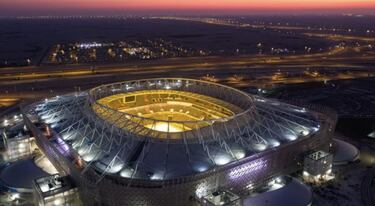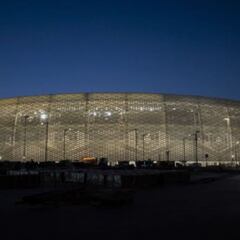What cities and stadiums will host the 2022 FIFA World Cup?
The countdown ahead of the 2022 tournament in Qatar is well underway with the competition set to commence in Doha on 21 November 2022.

The opening match at Qatar 2022 will be played on 21 November 2022 at Al Bayt World Cup Stadium, which is due to be inaugurated later in 2021, while the final will be played at the Lusail World Cup Stadium which is scheduled to open next year.
The venue for the 18 December 2022 World Cup final will be the last of the eight World Cup stadia to be inaugurated with three grounds: Al Thumama, Al Bayt and Ras Abu Aboud set to be operative later in 2021. The 80,000 capacity Lusail stadium will host 10 matches during the tournament 2022 World Cup and will be the venue for the final game.

Lusail's stadium will be the largest venue at Qatar 2022 and is located some 20 km from the centre of the city of Doha. The ground is located in the centre of Lusail a new modern city which is undergoing its own construction process.
Never in the modern history of the World Cup has the distance between the stadiums been so short. The distance between the city of Doha and farthest away World Cup stadium is 50km, while the closest is just is 7km from the capital.
World Cup 2022 venues
Al Bayt Stadium (Al Khor, 60,000 capacity)
Al Bayt, the second-largest of the eight World Cup stadiums, is located in the city of Al Khor, 50km north of Doha, and has a capacity of 60,000 seats.
Its design is inspired by the tents used by nomadic peoples in Qatar and the Gulf region, and boasts many features in the area of sustainability, such as a light-coloured exterior that helps to reduce heat and enhance the efficiency of the arena’s cooling system, and a retractable roof that allows sunlight in to aid the growth of the turf.
As part of Al Bayt’s post-World Cup legacy, the stadium’s upper tier will be dismantled after the tournament and will be used for the construction of sports facilities in Qatar and abroad.
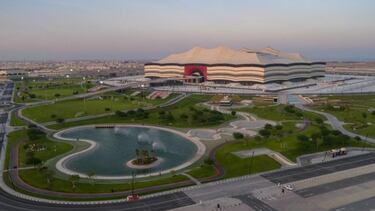
Al Thumama Stadium (Doha, 40,000 capacity)
The Al Thumama Stadium in Qatar’s capital Doha will be inaugurated on Friday 22nd October 2021, marking the completion of Qatar’s sixth FIFA World Cup 2022 ready venue after Khalifa International, Al Janoub, Education City, Ahmad Bin Ali and Al Bayt stadiums.
The new 40,000 seat stadium will host the Amir Cup Final between Al Sadd and Al Rayyan, coached by Xavi Hernandez and Laurent Blanc respectively.
Al Thumama Stadium was designed by renowned Qatari architect Ibrahim M. Jaidah and reflects the traditional Arabic headwear, the gahfiya, with its intricate exterior. The venue will host matches up to and including the quarter-final at the FIFA World Cup 2022 with the stadium also set to host matches up to and including the semi-final at the FIFA Arab Cup 2021, taking place this November and December.
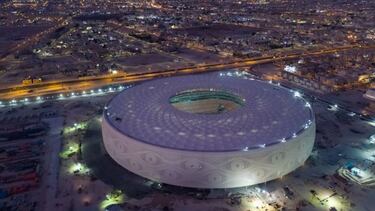
Al Janoub Stadium (Al Wakrah, 40,000 capacity)
Located to the south of capital Doha the Al Janoub stadium, inaugurated in May 2019 to stage the Emir of Qatar Cup final was the first 2022 Qatar World Cup stadium to be built and completed from scratch.
Upon its completion, stadium designer William Morales stated: ”It is an amazing feeling when we meet people from all over the world. I love seeing their faces when they see the stadium or walk on the pitch for the first time".
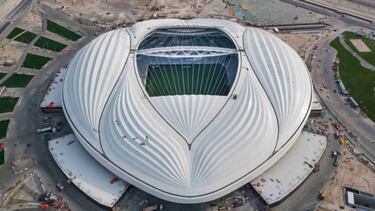
Ras Abu Aboud Stadium (Doha, 40,000 capacity)
The Ras Abu Aboud Stadium in Qatar's capital of Doha will become the first fully dismantled stadium in the history of the World Cup, designed in a unique way using 974 shipping containers and demountable building units.
This innovative design will allow the stadium to be completely dismantled after the end of the tournament with elements such as shipping containers, seats and the roof set to be reused in the development of projects and building sports and non-sport facilities in Qatar and abroad.
From its distinguished location on the Doha waterfront, Ras Abu Aboud Stadium will stand tall with its dazzling view of the skyscrapers in the West Bay area in Doha.
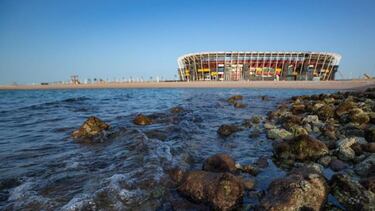
Education City Stadium (Al Rayyan, 45,350 capacity)
The inauguration of the Education City Stadium in Qatar took place on 15 June 2020, with the organizers putting together a virtual event to celebrate the World Cup venue’s opening due to the pandemic. Its inauguration came after that of Khalifa International stadium and Al Januob Stadium in 2017 and 2019, respectively.
Education City Stadium in Al-Rayyan in the Doha suburbs will host World Cup 2022 matches from the group round until the quarter-finals. The venue has been given a five-star rating by the GSAS Sustainability Assessment system for its construction and design. The state-of-the-art venue has incorporated many energy saving features, as well as an air-cooling system that will reduce the temperature in the stadium during matches.
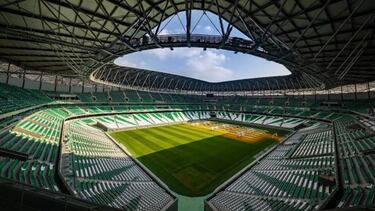
Khalifa International Stadium (Al Rayyan, 40,000 capacity)
Khalifa International Stadium is one of the most famous and oldest stadiums in Qatar and the stadium with a capacity of 40,000 fans and was inaugurated before the final match of the Emir of Qatar Cup in 2017 to become the first stadium completed by the local governing committee.
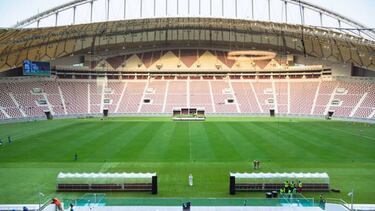
Al Rayyan Stadium (Al Rayyan, 44,740 capacity)
The 2022 World Cup stadium in Al Rayyan opened on 18 December (2020), coinciding with the final of the Emir of Qatar Cup and featured Al Sadd SC and Al Arabi SC.
Related stories
It is worth noting that Al Rayyan is the only World Cup stadium to bear the name of a Qatari club. It has a capacity of 40,000 spectators and is some 22km from the city of Doha.
The stadium incorporates symbols of Qatari life and culture, with an exterior façade that contains artistic elements symbolizing Qatar’s history and the beauty and diversity of its wildlife; what’s more the stadium’s design reflects the splendour of desert life, as well as the beauty of the sand dunes.
